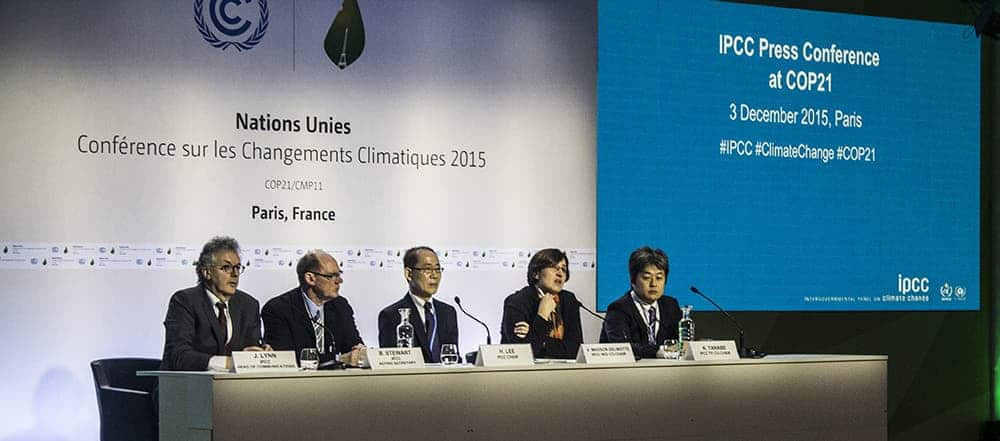The stated goal of the COP21 conference on climate change held in Paris until late next week is that of averting potentially catastrophic 2 degrees warming past industrial levels. At the last COP, held in Copenhagen, the stated goal of the meetings is that of curbing emissions to avoid 1.5 C of warming. Some might feel this sounds incongruous, weakening the credibility of the International Panel on Climate Change – a science board responsible for the most comprehensive assessments on the state of global warming. Today, at a press conference at COP21, a panel of scientists and chairmen from the IPCC said that they never suggested one or the other figures as a baseline for averting climate change. “The 2 degree goal is a political figure, not generated by scientific reports,” the panel warned.
Climate change has stopped being the object of the debate, that is that it’s real and it’s caused by humans. Among scientists, this has been settled decades ago. What scientists are debating now is far more important like “how much will sea levels rise” or “what temperature threshold is too dangerous”. Yet, many researchers question the use of a temperature target when talking about mitigating climate change. Concerning the two-degrees warming the policymakers have taken upon themselves to avoid, this is largely arbitrary. It’s not based on scientific consensus, but that’s not to say that it’s not useful since it can be used as rallying figure.
“It emerged from a political agenda, not a scientific analysis,” said Mark Maslin, professor of climatology at University College London, for the WSJ. “It’s not a sensible, rational target because the models give you a range of possibilities, not a single answer.”
Actionable goals have proved difficult to articulate from the beginning of climate-policy efforts ever since the 1992 United Nations Framework Convention on Climate Change (UNFCCC) expressed the aim as preventing “dangerous anthropogenic interference in the climate system”. Because there’s a great deal of uncertainty when studying the Earth’s climate system, efforts that attempted to clarify what “dangerous” actually means have been fruitless.
There are also concerns that temperature is not a suitable metric, and a more holistic approach should be taken. For instance, the oceans soak a huge proportion of the CO2 dumped in the atmosphere and about 93% of the extra energy being added to the climate system, both warming it and acidifying the waters. A climate change index would be cool, but that might only further add to the confusion. Some say that CO2 ppm levels in the atmosphere is better — just keep it as low as possible!
“The measure in change of temperature on the surface of the planet is an indicator. Change in sea level is another indicator. When climate is changing, the temp change is not unform. It’s particularly strong over the Arctic. There are regional dimensions and the temp metric is just a measure to reduce all other metrics to one,” the IPCC panel said today at COP21.
Also, at the end of the day, scientists debating whether 1.5 or 2 degrees should be averted is largely of not good since we may already be locked in. If we continue on a business-as-usual scenario, the world will likely warm by at least 3 degrees Celsius by the end of this century.










